The Frederique Constant Slimline Monolithic Manufacture and its Groundbreaking New Oscillator (Live Pics & Video)
A major breakthrough in the field of mechanical timekeeping.
The word innovation is so often used and abused in the watch industry that it loses its true meaning. But the development Frederique Constant is unveiling today is an authentic horological breakthrough. A prodigious feat of engineering that relies on the principle of compliant mechanisms, the Slimline Monolithic Manufacture is regulated by a revolutionary flexure pivot oscillator beating at an impressive frequency of 40Hz. Today MONOCHROME provides in-depth coverage of this unprecedented development with our article, video and live photos.
Basic principles
The way mechanical wristwatches are regulated has barely changed in centuries. To be more precise, not since the invention of the balance spring over three centuries ago. The basic operating principle is the following. Energy is stored by the mainspring inside the barrel. The energy is released via the gear train that drives the hands. The speed at which the gears rotate is controlled by the regulator that comprises the escapement and the oscillator. The escapement transfers energy to the oscillator (the balance wheel and its coiled hairspring) via impulses. In return, the oscillator regulates the escapement. Its oscillations unlock the escapement at a regular rate allowing the gears to rotate and the mainspring to unwind progressively.

Today, the vast majority of watches are regulated by a Swiss lever escapement and a balance wheel. Very few watchmakers have challenged this type of regulator. Although a few new escapements have appeared in the past, the Omega Co-Axial escapement is the only other type of escapement currently produced at an industrial scale. And there have been even fewer developments regarding alternative oscillators. Apart from rare non-commercialised concepts, (or in limited quantities) the sprung balance wheel remains the exclusive time basis for mechanical wristwatches.
This gives a measure of the importance of the fascinating development Frederique Constant is presenting today. Developing a new typology of oscillator means exploring uncharted territory. To do so, Frederique Constant used a technology that is not per se new but whose application in the field of watchmaking yields amazing potential: compliant mechanisms.
Compliant mechanisms – also known as monolithic or jointless structures – use the elastic properties of a material to affect the motion of mechanical components. These one-piece, compact, and precisely produced components replace several mechanically assembled parts. The absence of mechanical coupling eliminates contact, play, friction, wear, lubrication or dispersions.
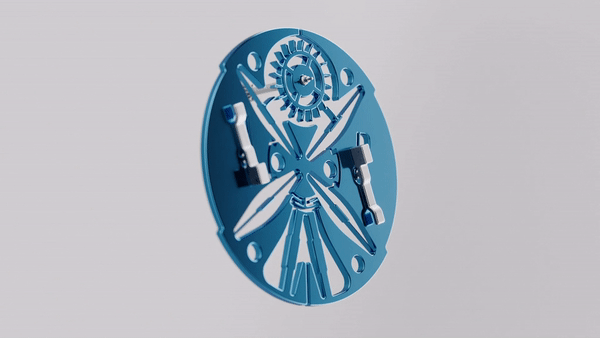
The Frederique Constant Monolithic Oscillator
For Frederique Constant, the idea was to replace a traditional regulator with a monolithic flexure pivot oscillator that integrates the anchor. The traditional oscillator, composed of over 20 components, is substituted by a one-piece silicon oscillator fitted with two regulation weights working in conjunction with the escapement wheel.
The revolutionary design oscillates with a low amplitude of only 6 degrees (versus ~300 degrees for a regular balance wheel). It can reach an impressive frequency of 40Hz or 288,000 vibrations/hour compared to the 4Hz of 28,800 vibrations/hour in most modern mechanical movements, including the traditional manufacture calibres produced by Frederique Constant.

The Frederique Constant Monolithic is not the first flexure oscillator: the Parmigiani Senfine concept, the Ulysse Nardin Freak Next, the Zenith Defy Inventor concept are other notable examples. Yet, the Monolithic oscillator incorporates several innovations in relation to its design and geometry. The escapement anchor is incorporated into the oscillator, and, for the first time, this function is integrated into the flexures. This enabled a substantial reduction in size -in line with the footprint of a traditional balance wheel – while keeping all the functions in one thin silicon layer measuring 9.8mm in diameter and 0.3mm in thickness. Another specificity is that the oscillator is fitted with adjustment weights, just like those used on a traditional free-sprung balance. Watchmakers can easily fine-tune the frequency by simply turning these two weights.
As you would expect, silicon is the perfect material to craft such an avant-garde component. The DRIE manufacturing process allows for the production of ultra-precise and complex shapes. With the tribological properties of silicon, no lubrication is required, and wear is minimal. There is no fatigue effect and moreover, it is a lightweight and amagnetic material.
Together with this revolutionary oscillator, Frederique Constant’s development team had to develop a brand new movement capable of coping with the breakneck speed of its frequency. The result is the new automatic FC-810 movement, Frederique Constant’s 30th calibre. To handle the frequency, the gear train had to be re-engineered, and it was fitted with a fourth wheel (instead of three traditionally). Despite the 40Hz frequency, it comes with a healthy 80-hour power reserve.
Given the unprecedented nature of the escapement, the traditional Witschi devices that rely on the ticking sound of the movement are inoperative. To calculate the average rate in seconds per day, laser cameras taking 250,000 images per second are used.
A Technological Partner, Flexous – The Dutch Connection
The Monolithic oscillator is the result of a three-year joint development project between teams at Frederique Constant and Flexous resulting in a dynamic exchange of high-profile, multi-disciplinary expertise. Flexous is an independent horology technology company located in Delft, The Netherlands, which specialises in flexible watch parts. They design, conceive and produce innovative watch parts and partner-up with like-minded watch brands to develop flexible mechanisms from concept to product and supply in volume. Flexous strives to position itself as the most forward-thinking, innovative technology provider in horology, and they are well on their way with this new revolutionary project. More details at flexous.com.
The idea behind the Monolithic Oscillator was born from an encounter between Peter Stas, co-founder and former CEO of Frederique Constant, and Dr Nima Tolou, founder and CEO of Flexous, an innovative horology-oriented technology branch of YES!Delft, a leading Dutch tech incubator. Following their encounter, the Frederique Constant team commissioned Flexous to produce a unique, flexible oscillating system with distinctive specifications.
The Frederique Constant Slimline Monolithic Manufacture
The first model powered by this groundbreaking movement is the Frederique Constant Slimline Monolithic Manufacture. Presented in a 40mm round case, the new watch comes in rather classic attire with a hobnail pattern on the dial and printed Roman numerals paired with Breguet-style hands. However, the opening at 6 o’clock offers a view of the groundbreaking oscillator. The pointer date at 12 o’clock brings a pleasing symmetry to the dial layout. As you would expect from a movement beating at a 40Hz frequency, the motion of the seconds hand is continuous and perfectly smooth (captured perfectly in our video).
Flip the watch over, and the exhibition caseback offers an unimpeded view of the new calibre FC-810. The decoration is traditional with Geneva stripes and perlage, and the oscillating weight is skeletonised. The movement is very close in architecture to the traditional manufacture movements of the brand, without the regulating organ, of course.
With the introduction of this unparalleled oscillator, we are dealing with the true essence of mechanical timekeeping and chronometry. The technical specifications of the Slimline Monolithic Manufacture are outstanding. Its innovative design and reasonable size bring notable improvements to previous solutions. Last but not least, this cutting-edge technology is offered at a surprisingly affordable price. At this price level, the aim is not to present laboratory prototypes but to undertake serial production to make this innovation available to as large an audience as possible.
Although the brand does not communicate on the ultimate rate deviation achieved per day (movements will be regulated with -4 +6 tolerances, which is similar to COSC specs), the frequency used yields much greater potential in this respect. Definitely, something to keep an eye on. For now, kudos to all the people involved in its remarkable development.
Availability & Price
The Frederique Constant Monolithic Slimline Manufacture will first be offered in three limited editions: 810 pieces in stainless steel with a blue dial, 810 pieces in stainless steel with a silver-coloured dial and 81 pieces in 18k pink gold. The price is set at EUR 4,495 in steel and EUR 14,495 in gold.
For more information, please visit frederiqueconstant.com.


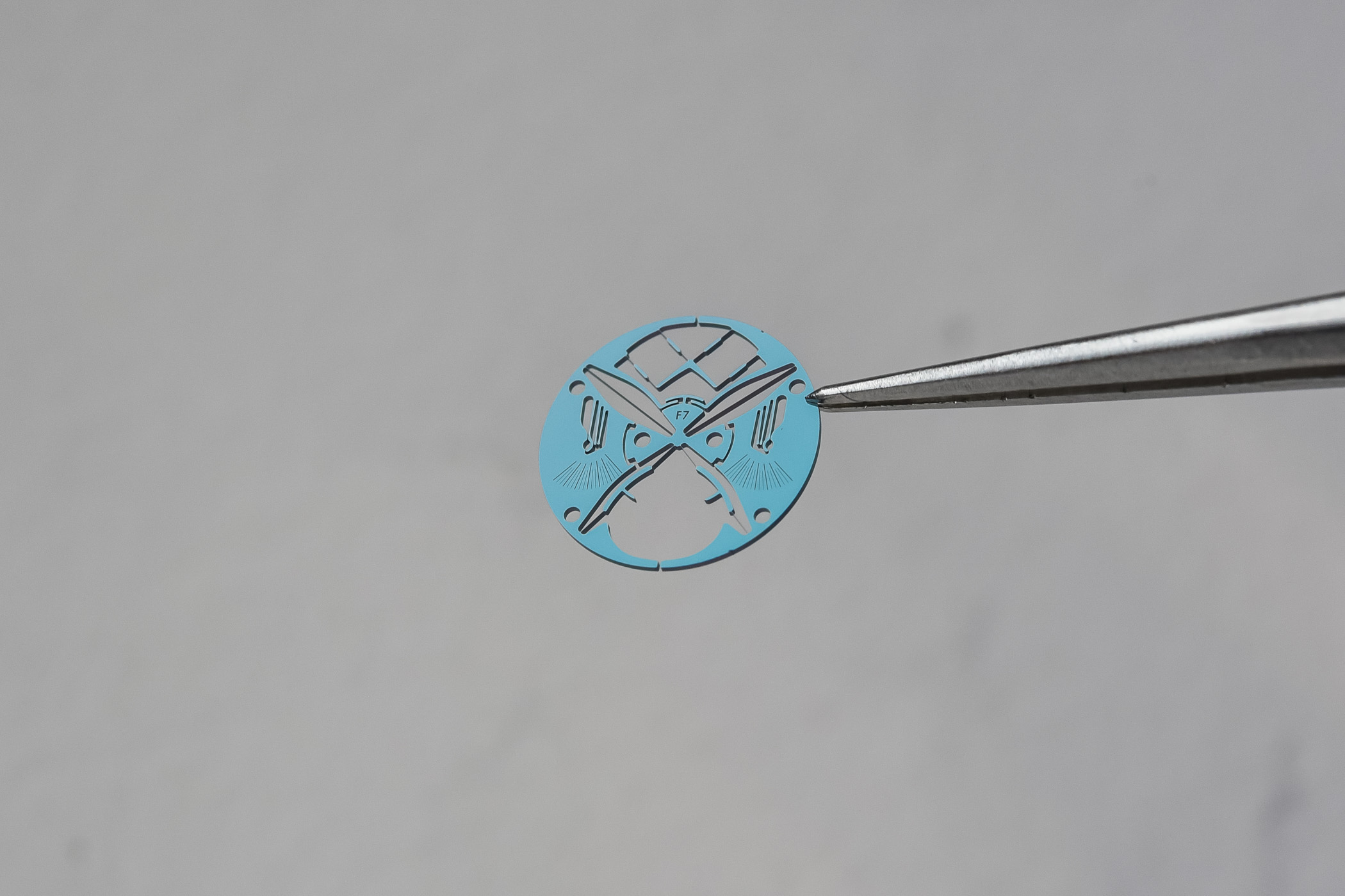

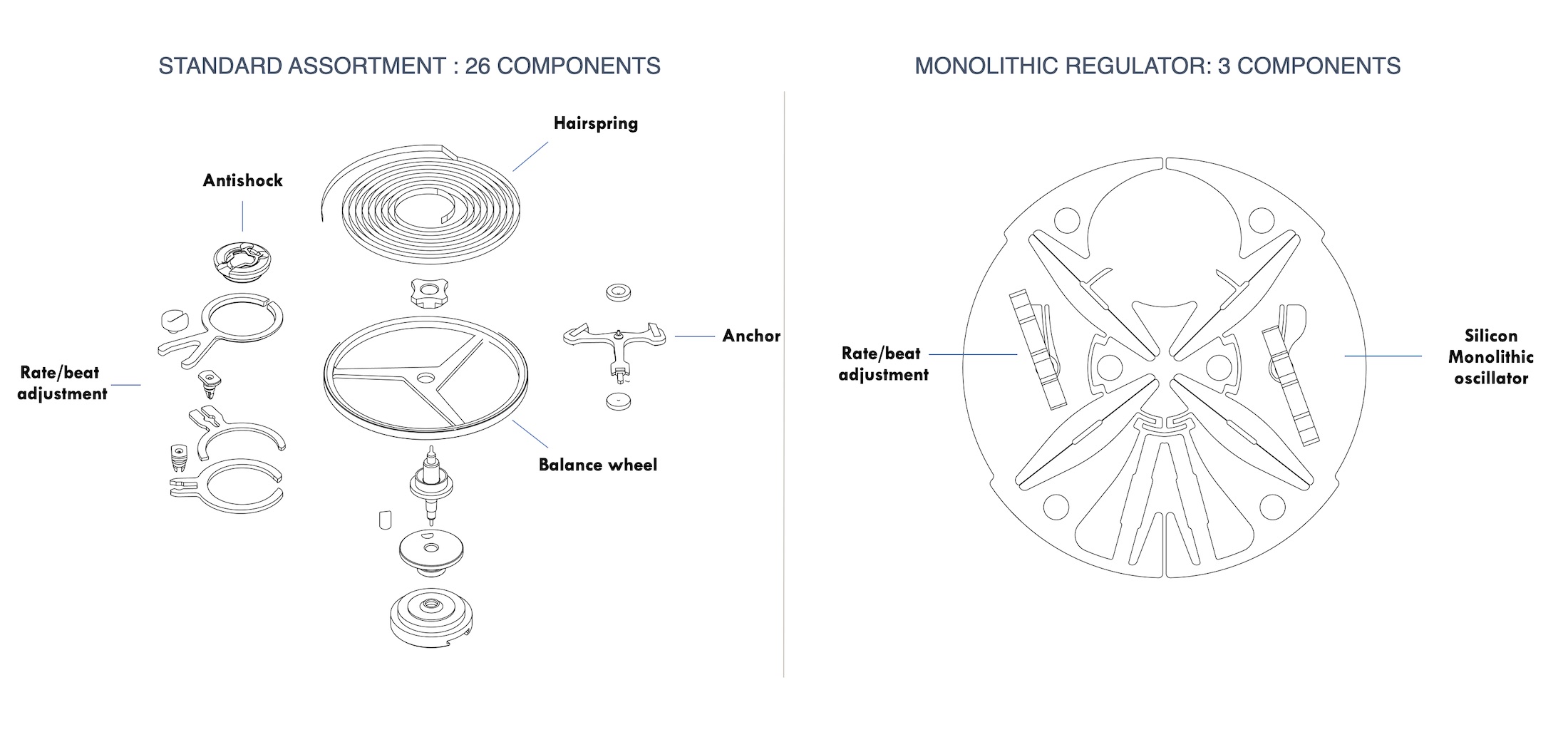

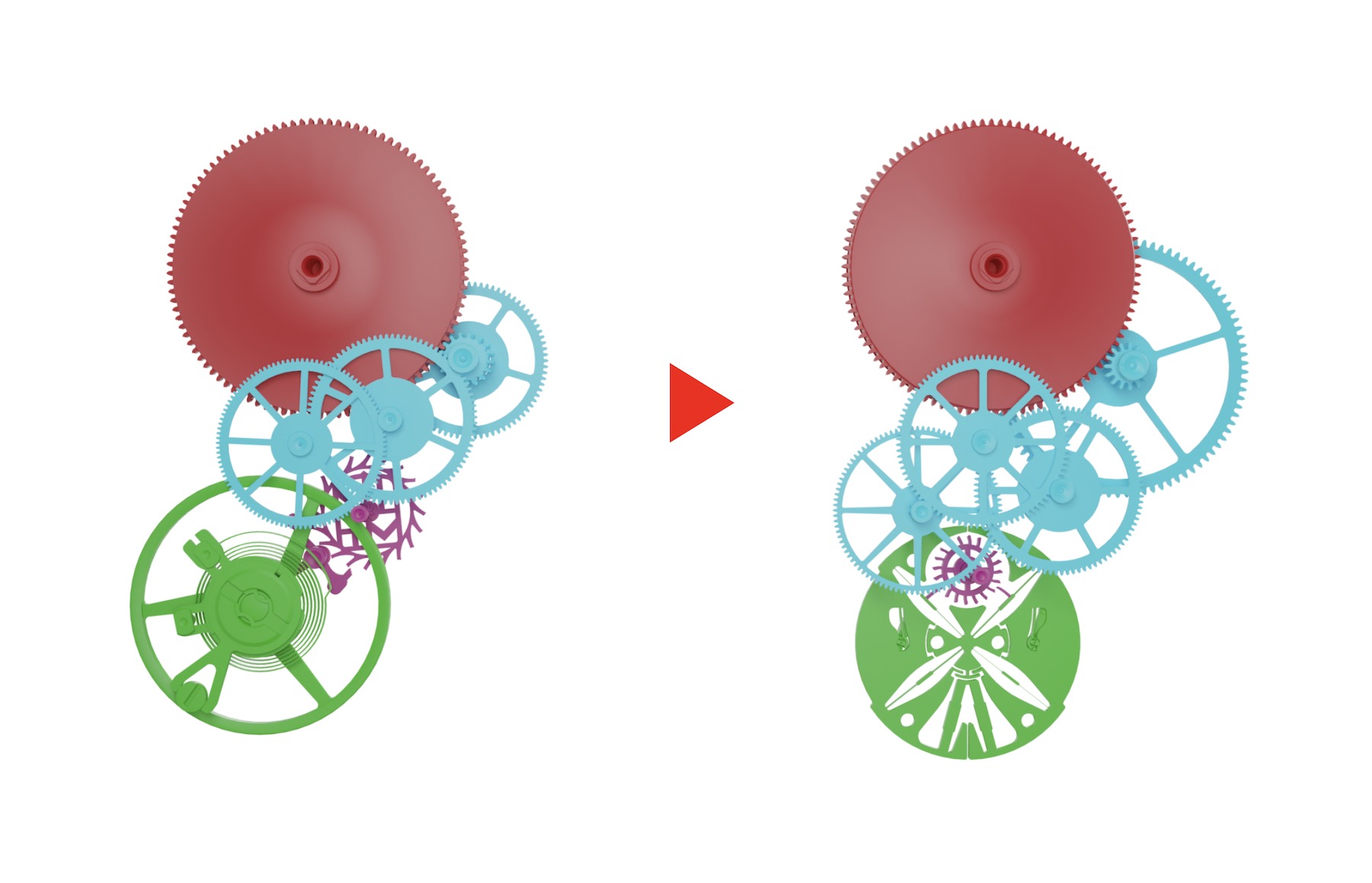

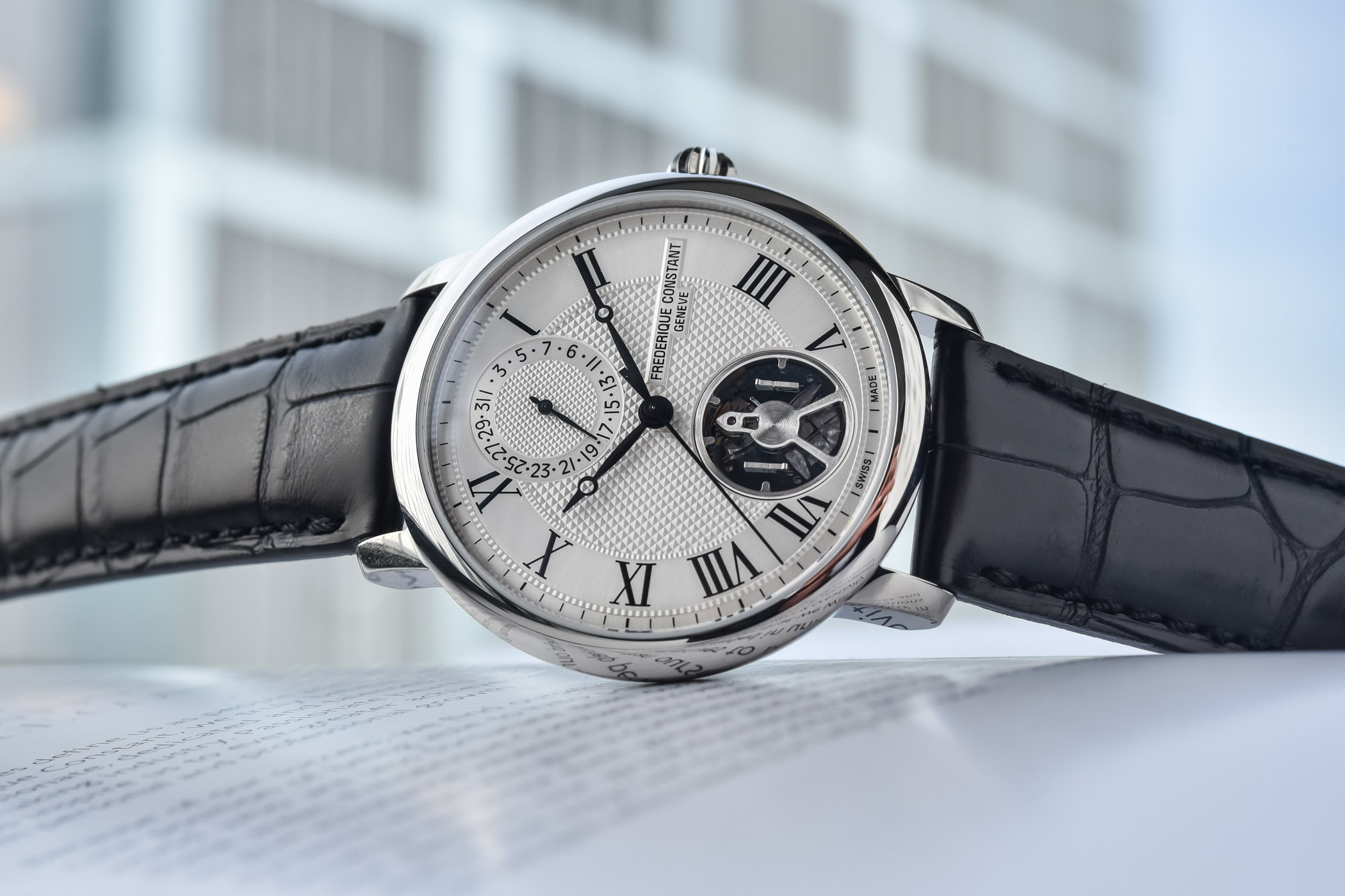

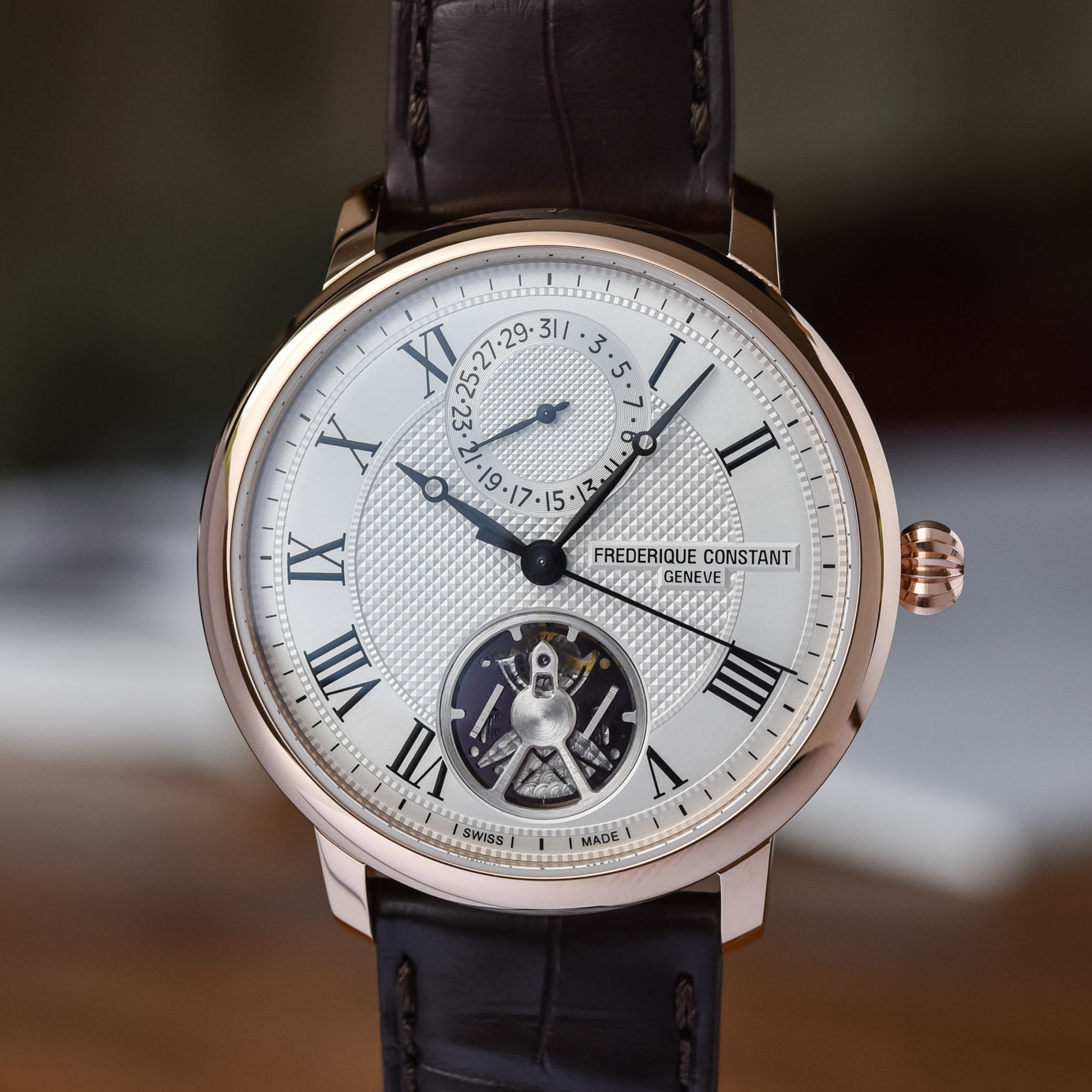
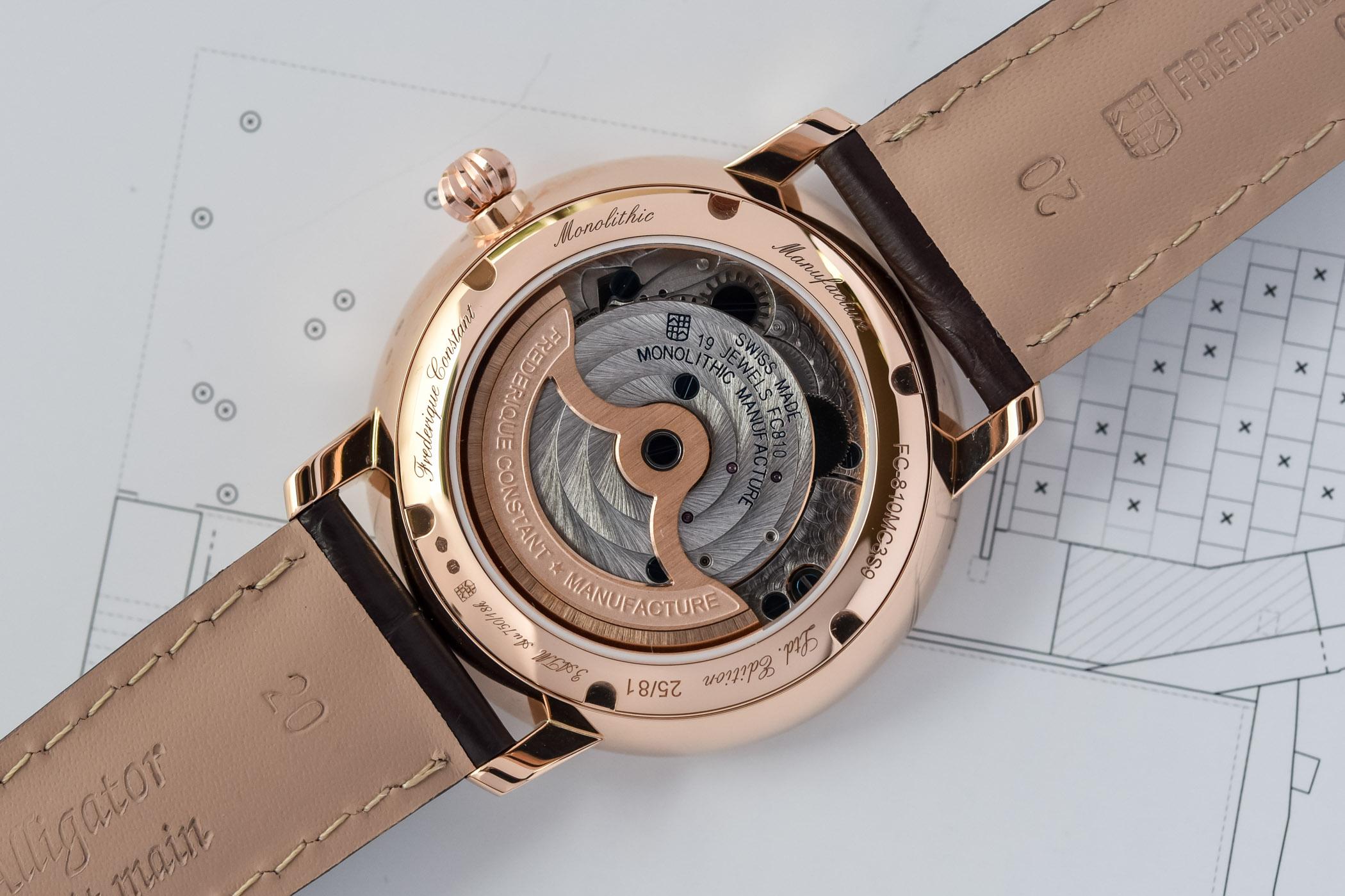


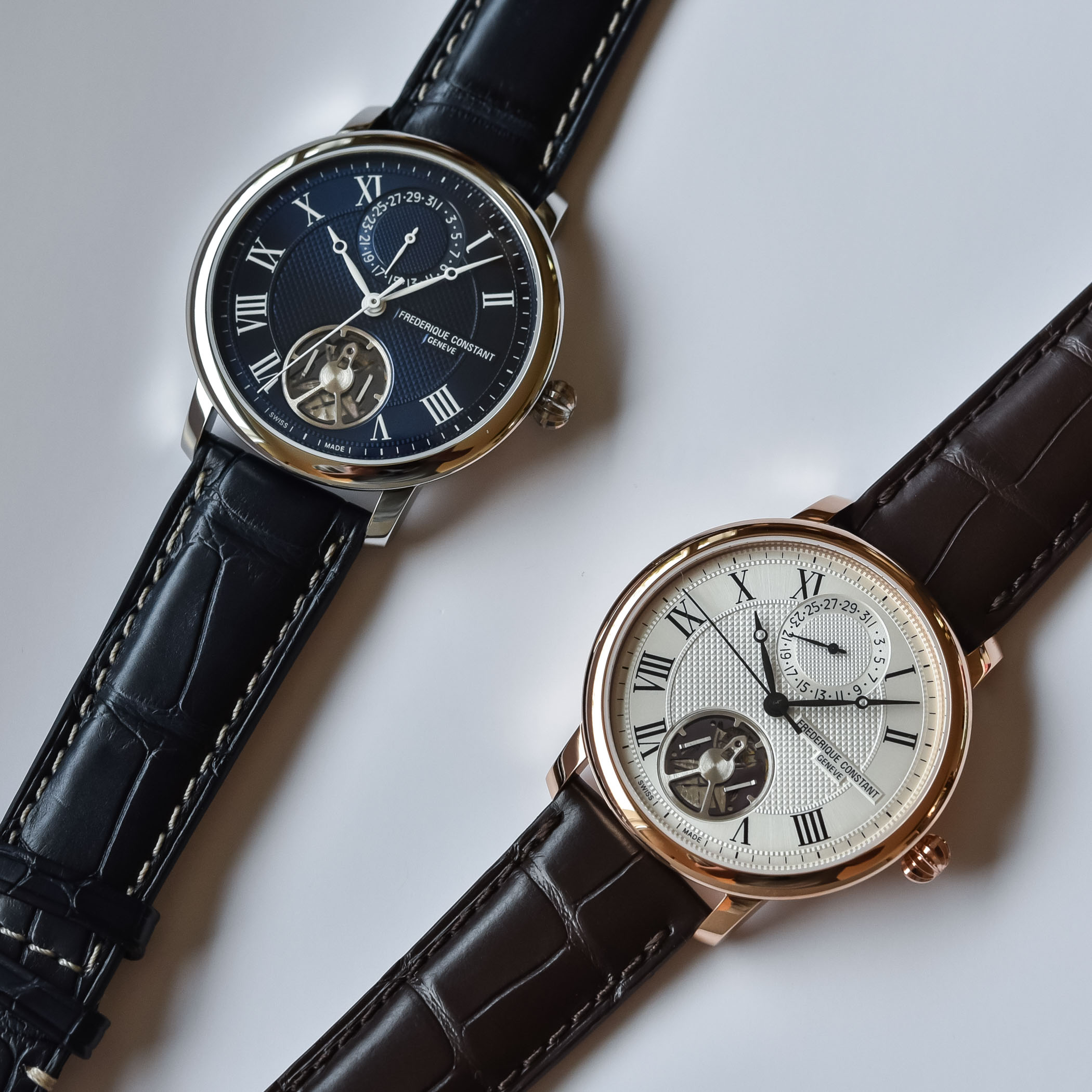
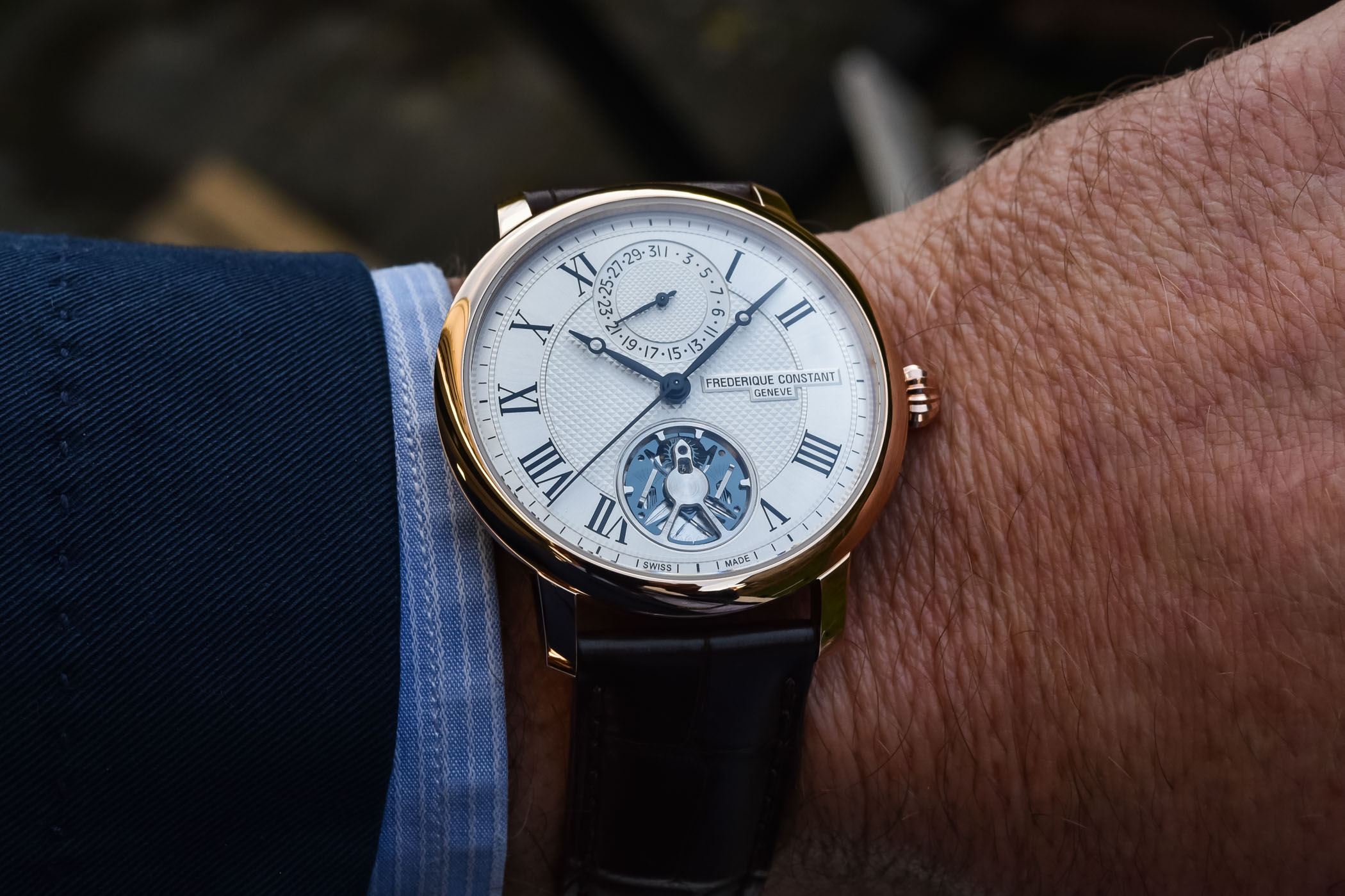



18 responses
FC just leveled up in a major way. Wow
I watched the entire video to understand how this movement was working and I’m truly impressed by the level of innovation this is !
What I’ve always loved in watching a mechanical watch running is how smoothly the second hand moves compared to quartz. When you look at this model you just cannot see any “drop” as it runs so perfectly.
The gold model is really beautiful and pretty well finished… I wonder how much this would be if made by Breguet or any other great brand ?
But as it is Frederique Constant, will people consider it as “a cheap luxury watch” ?
This is really impressive, should put FC instantly on every enthusiast’s map
This movement really deserves to be cased better designed watches though, that pseudo-Breguet face in a Jules Audemars case does not cut it anymore
I wonder, at those speeds, can you hack the seconds on this watch?
Surprised you didn’t mention it was a Dutchman (Huygens) who invented the balance spring, in light of it being a Dutch company working with FC on this new device. 😉
Citizen is hitting it out of the park with its mechanical prowess at the moment (although I still feel uneasy about the use of the ‘Arnold’ name; but they’re hardly the only ones guilty of that type of thing). I am now paying full attention.
I will sell my mechanical watches and buy a Quartz.
if the purpose is to simplify and achieve precision, there it is.
no need for silicon parts based mechanics that can only be replaced, not repaired.
great watch, but wow, the innovation lies are now being spun.
lvmh already did such thing – zenith… remember, not long ago.
actually both very interesting, I agree, as a technologically interested person, and objectively an improvement.
but the key improvement from a pure technological standpoint has already been sold more than any other recent watch.
The OS-operated watch, that goes even beyond the quartz watch.
this is like inventing a motorola razer flip-phone in an age of smartphone, trying to establish a replacement to the Bell pulse dial Deskphone.
my new grail watch collection is moving towards:
– a christian laas watch
– a grandseiko quartz
– a modern smartwach
from
– vianney halter resonance
– Lange Zeitwerk
– IWC Portugieser
yes, I’m getting fet up with this kind of innovation marketing. this is engineering, not horology.
then let’s face it proper engineering needs no moving parts anymore, already for long.
It will be interesting to see how much resistance there is to this, as an engineering solution…but there will always be Luddites, I suppose.
I do agree that FC’s styling is a serious weak point. Hands, fine; Romans, OK and even nicely proportioned. Stamped ‘guilloche’…go away. Trick to make a $200 quartz look fancier/better is a bad move on a $5K piece. And the date dial is a poor move, IMO.
BUT…this is a compliant mechanics movement developed in a reasonable period of time, offered at a mostly manageable price. If FC can do this then others should be able to…altho finding the right development partnership is easier said than done. That offers a reasonable hope that the concept can continue to be improved as it’s brought to market by several manufacturers. (And give us better styling….) I’m thinking first: if the PR gets longer, a manual winder…and if not that, then a micro-rotor.
Regardless, kudos to FC and Flexous.
Yes, when you pull the crown the second hand stops.
You’re right, Gavin, but there’s also Robert Hooke… Still under debate 😉
I just read up on that, very interesting. Even Newton fell foul of Hooke’s accusations of proprietary skullduggery. Heh.
A terrific innovation, that smooth sweep is ethereal. Unfortunately the oscillator is not an aesthetically pleasing component. The watch would look great without the hole in the dial.
Congratulations to Citizen/FC management to this quantum leap in watchmaking.
When the perpetual calendar is added to this line???
They made a “Quartz” watch. At first I was fascinated but as I read on they put a quartz oscillator in a different place. I salute their solutions to their engineering issues that arose during the development of this piece. I simply cannot appreciate the race for accuracy. My 45 year old King Seiko is perfectly accurate enough for me even though I have to tap it to get its heart started. I love mechanics that I can see working, not a blur. Congrats to them but not something to spend my hard earned cash on.
This was a fascinating article…..a major breakthrough in watch making. I plan to purchase a Frederique Constant Slimline Monolithic Manufacture. The video explanation was excellent, in fact I saved it. Goodbye Rolex including other alleged prehistoric watch calibers.
I am impressed by this innovation.
First the silicon hair spring came, and now the oscillator arrive.
Knowing how my co-axial watch works, i can not wait when FC put a silicon spring in the barel. A power reserve of three weeks?
Very very innovative, we must move forward. I am an industrial designer but concentrating on watch design, FC nice enough, but I am happy to visually style your watches, that’s really what a lot of the buying public go for. LOOKS are very very important once the mechanics are OK!
When i left a reply at 27-3-2021 i could not forget that Frederique Constant slimline manufacture oscillator, so i bought one.
When writing this reply i wear my Frederique Constant.
Making the humble mistake call my watch a Frederique Constantin like Vacheron Constantin.
In many ways it feels like a Vacheron, but than more affordable.
When have my watch 4 months, i have experience how the silicon replacement of the conventional balance with spring works in practice.
40Hz runs faster than 4Hz, thats for sure.
Calling this watch a quartz is ridicules, while i can not find any battery in my Frederique Constant.
New technology can be afraid, albeit you can not stay forever in prehistoric circumstances is my opinion. Move forewords, innovate, evolve.
Having a watch collection i discover i wear my Frederique Constant much. It is a perfect watch to enjoy my free time, relax and for example browse watch magazines.
Sadly my aunt died, so to remember her forever i wil take my Frederique Constant to the funeral. She loved my Frederique Constant, so it is a strong memory.